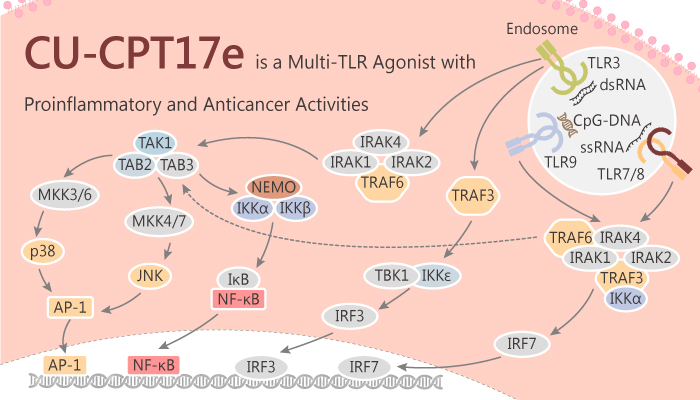Toll-like receptors (TLRs) are a family of pattern recognition receptors (PRR). They play an essential role in coordinating innate and adaptive immunity to protect the host from bacteria, viruses, other pathogens. Specifically, TLRs have a bright future in anticancer therapy and have significant therapeutic potential. TLRs agonists have been listed in the National Cancer Institute’s list of immunotherapeutics with the highest cancer potential. In addition, Multiple TLR activation can enhance the immune response by triggering the synergy between different TLR pathways. Instead of working alone, TLRs network with each other to recognize these diverse components of invading pathogens. Moreover, the expression of TLR varies with tissue and cell types. Even for the same cell type, the expression pattern of TLR is significantly different between subgroups. Therefore, the potential application of multi TLR based therapies in infectious diseases, autoimmune diseases, and cancer has attracted much interest. CU-CPT17e is a TLR agonist.

CU-CPT17e is a potent TLR agonist that activates TLR3, TLR8, and TLR9. Besides, Biochemical studies show that CU-CPT17e can induce a strong immune response by producing various cytokines in human monocyte THP-1 cells. In addition, CU-CPT17e inhibits HeLa cancer cell proliferation by triggering apoptosis and stopping cell cycles in S phase. CU-CPT17e can also induce growth inhibition, apoptosis induction and cell cycle arrest in human cervical cancer cells. Furthermore, CU-CPT17e inhibits the proliferation of cancer cells in a dose-dependent manner. These results indicate that CU-CPT17e has potential therapeutic applications in vaccine adjuvants and anticancer therapy based on multiple TLR activation. All in all, CU-CPT17e is a potent TLR agonist that activates TLR3, TLR8, and TLR9.
References:
Zhang L, et al. J Med Chem. 2017 Jun 22;60(12):5029-5044.